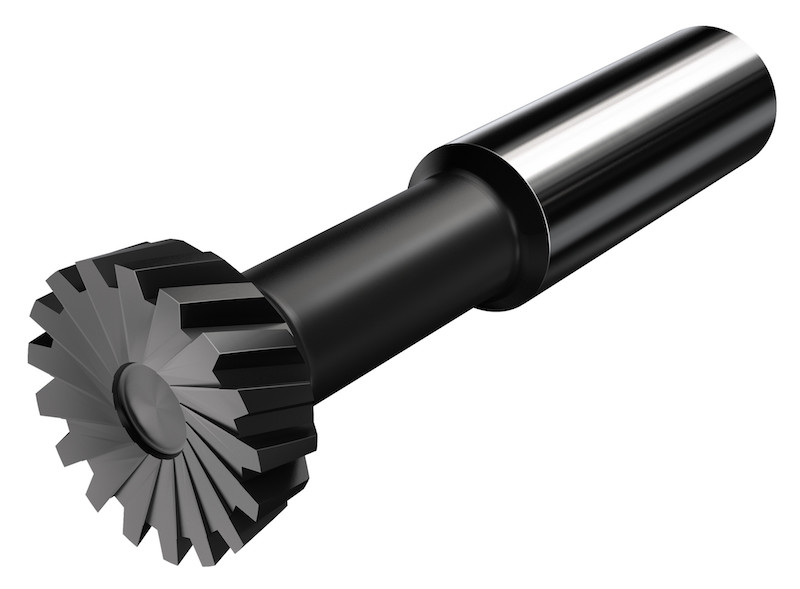More flexible gear machining for industrial robots
Today’s industrial robots must fit into smaller spaces, so as much “manufacturing real estate” as possible is dedicated to production. This places pressure on manufacturers to machine smaller, tighter components for these machines. Here, Harish Maniyoor, global product manager for automotive at the machine tooling specialist Sandvik Coromant explains why power skiving is the answer.
The overall number of industrial robots operating in factories worldwide grew to 2.7 million in 2019, according to the 2020 World Robotics Report by the International Federation of Robotics.
This was a 12 percent increase from 2018 and a historic high. Robots factor into a range of industries, from automotive and aerospace to the food industry and pharmaceuticals – yet all of these sectors have common requirements.
Not only must these robots be smaller, but also lighter with reduced inertia and able to perform more exact movements with optimal speed and efficiency. The challenge is on for manufacturers to machine smaller and more precisely engineered-components – like internal gear reducers – with more flexible designs.
This must be achieved cost-effectively with maximized machine uptime, and the highest metal removal rates that relate directly to production speeds. For all areas of manufacturing, cost-cutting remains a priority.

That’s before we even consider the extra challenges of the continuing Covid-19 pandemic, like unpredictable demand scenarios and the need to maintain productivity with fewer worker on the shop floor.
The solution lies in taking a better approach to tooling. In particular, a machining process that has been around for more than 30 years and originated in the automotive sector.
The need for speed
The machining challenges we see in robotics are not unlike those we are seeing in electric vehicles (EVs). As we’ve seen with the requirements from smaller, more agile robots, electric engines are also getting smaller and lighter, with a need for tough transmission components to handle the much higher revs per minute that EV engines produce.
Whether for EVs, robotics or other sectors – like wind power, for instance – manufacturers require more flexibility in their gear machining, an area that, historically, has not been flexible.
Traditionally, projects that involved machining gears would depend on special machines and processes, which limit the production process – especially in mass production scenarios.
This is where power skiving offers a solution. Power skiving is a continuous, rotary cutting technique where the tool meshes with the gear being made. The process combines hobbing and shaping.
The intersecting angle between the tool and gear axis, and how this affects the revolution speed, also greatly benefits productivity. This means a whole component can be machined in a single, multi-tasking machine rather than several machines, which removes the need for several specialized machines and machine changes.
Reduced machine changes can significantly benefit any manufacturers’ bottom line. Other advantages of power skiving over traditional machining methods include higher productivity, because the tool can machine nearer to the workpiece, more design precision and flexibility.
One Sandvik Coromant customer in the automotive segment achieved a 90 percent reduction in machining time. In that case, the customer reduced the time-consuming shaping process it was using to make gear components from low-alloy 16MnCr5 by opting for Sandvik Coromant’s CoroMill 178 for power skiving.
The customer increased process stability and considerably improved component quality. Could the same benefits be enjoyed by robot parts manufacturers?
Rise of the robots
With power skiving, it’s important to consider that its advantages are not limited to any sector, like automotive or aerospace. Whatever the segment, the real advantages are improving metal removal rates and the ability to machine components with one machine in a single setup.
A single set-up also greatly improves machine utilization – based on Sandvik Coromant’s own findings, a 20 percent increase in machine utilization can provide a 10 percent higher gross profit margin.
So, let us now examine the advantages of power skiving in robotics. In one case, a robotics manufacturer in Korea approached Sandvik Coromant with a requirement to produce an accurate gear for a 5-axis machine.
Specifically, the customer wished to produce an internal gear reducer to be used for precise motion control in one of its robots.
The customer’s existing production setup took up to 60 minutes to machine a single part. To solve this, Sandvik Coromant presented its power skiving offer, which would be used in an NTX 1000 machining centre from DMG Mori.
The result was that each component took just eight minutes with Sandvik Coromant’s power skiving tool – a considerable improvement in productivity.
Moreover, this success has opened up a whole new industrial segment for Sandvik Coromant: robotics. The company expects growth in this area, and believes its tools will offer advantages in Industry 4.0 and automated manufacturing setups. This will prove crucial against the continued, unpredictable challenges of the Covid-19 pandemic.
The advantages of better tooling also go beyond the tools themselves – what about applying a whole new ethos to your machining? That’s where Sandvik Coromant’s PrimeTurning comes into play.
PrimeTurning is an ethos that allows machine shops to complete longitudinal (forward and back), facing and profiling operations with a single tool.
The methodology is based on the tool entering the component at the chuck, and removing material as it travels towards the end of the component.
This prioritises all-important metal removal rates, and also means faster, quality production and changeovers – including when manufacturing parts for industrial robots that must fit into smaller spaces.
As demand for industrial robots continues to grow, as reported by the IFR, their components must conversely become smaller.
Therefore, it’s ironic that in power skiving, a 30-year old machining technique, plus the CoroMill 178 and Sandvik Coromant’s PrimeTurning ethos, manufacturers could have all they need to stay at the forefront of the robotics revolution.

